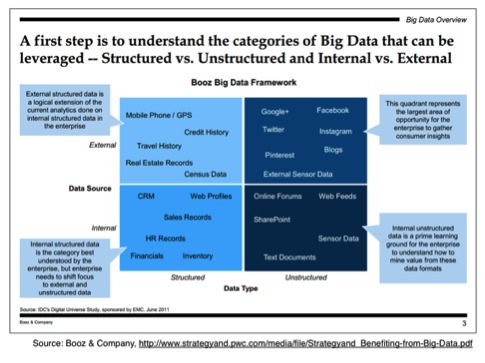“In 2014, big data will finally be put to good use as marketers stop waiting for insights to reveal themselves and start finding actionable paths through the information.” - Forrester Consulting
Industry experts are saying that 2014 will be the year for data-driven marketing, especially for B2B marketers. While the more sophisticated and technology-enabled marketers (read: B2C) are actively using solutions that turn data into insights, a recent CMO survey showed that 63 percent of marking projects still don’t leverage marketing analytics to inform decisions. It’s like shooting an arrow without aim.
Barriers to quick uptake could very well be the daunting task of deciding what data to analyze and beginning data accumulation and analysis in earnest. The good news is that the big data marketing landscape for B2B is rapidly evolving, and with that comes a wealth of opportunities for marketers to use technology and predictive analytics to improve marketing efficiencies and predict sales.
If you’re eager to get started (it’s OK, it’s only May!), there are a several things you need to consider deeply before you decide to embark on big data analytics.
Related class: Using Big Data to Support Managing Marketing Performance
What Data Do You Want to Capture?
It is easy to become lost in the possibilities of big data, and so it’s critical to pinpoint what insights you want to be able to capture and why. For example, do you want to simply understand more about your target audience profile through data? Or is your organization looking for a better conversion rate? Do you want to optimize media spend? Does your team want to be able to deliver better qualified leads from its campaigns?
To that effect, not all data is created equal. Certain marketing goals require a more thorough engagement with a more complex type of big data.
Identify Your Data Sources
Booz & Company does a good job of differentiating between structured and unstructured big data. Structured data refers to data that is compiled (via a survey, for example), provoked, created, and transacted. Structured data is descriptive in nature, forming a basis for categorization of an audience, such as position, age, title, organizational employee size, etc.

On the other hand, unstructured data is user-generated and must be captured. It’s good to think about unstructured data as “digital breadcrumbs” that reveal behavioral patterns of target consumers and predict those consumers’ next purchase, among other insights.
While the role of descriptive data is paramount to any marketing initiative, behavioral data is the key to solving some of the more in-depth marketing challenges, such as understanding the timeframe your customer is likely to buy in or who else might be involved in the decision-making process. Think about it: by aggregating the digital footprints of a potential buyer (unstructured, behavioral data), you can accurately pinpoint when the buyer will purchase, what he will likely purchase, and even the potential value of the purchase. The possibilities are incredible.
What’s Next?
“Buyer behavioral data remains the greatest untapped marketing asset,” according to the Forrester Consulting report, and so you definitely don’t want to leave any stone unturned.
Be a part of the “biggest » big data prediction of 2014 and start using behavioral data to your advantage.
Want to learn how to leverage big data for improved marketing ROI? Watch Online Marketing Institute's class, Using Big Data to Support Managing Marketing Performance and learn what the term "big data" means, and why it is important for marketing when it comes to strategy, product and pricing decisions.